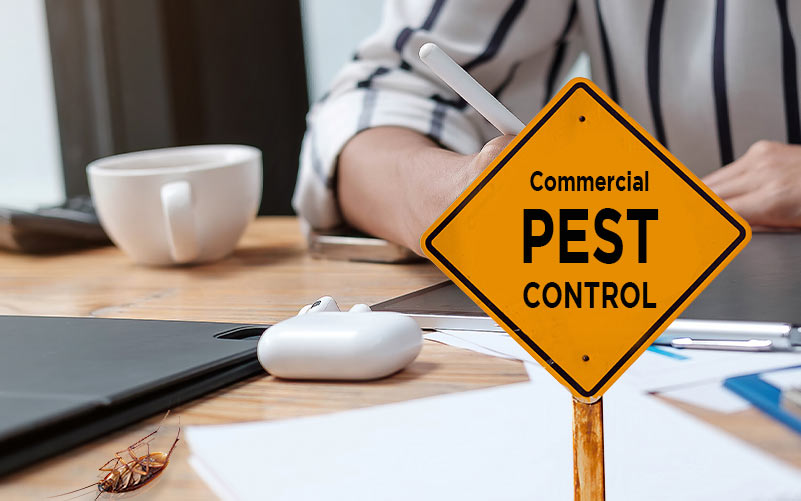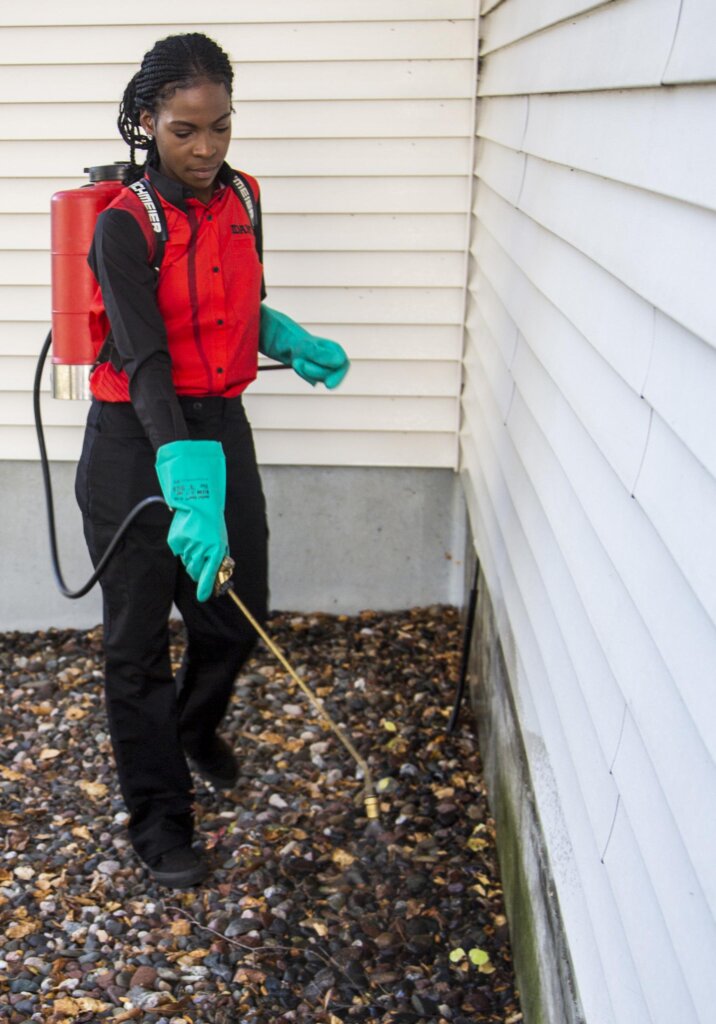High Quality A1 Pest Control Services Charlotte - Secure Your Home
High Quality A1 Pest Control Services Charlotte - Secure Your Home
Blog Article
Bed Insect Therapy Failure: Comparing Chemical Vs. Non-Chemical Solutions
In the realm of parasite control, especially when taking care of the persistent problem of bed insects, the selection in between chemical and non-chemical treatment options can be a crucial one. Both methods supply unique benefits and drawbacks, influencing elements such as effectiveness, security considerations, and general price. By analyzing the nuanced information of each approach, a clearer understanding of which path to pursue in resolving a bed bug infestation can be obtained.
Performance of Chemical Treatments
Chemical therapies for bed pest problems have actually been widely acknowledged for their quick and powerful efficiency in eliminating these parasites. When taking into consideration the performance of chemical treatments, it is crucial to comprehend that they can supply a extensive and quick service to a bed insect issue. Specialist pest control men frequently count on pesticides to target bed insects at various stages of their life cycle, including adults, eggs, and fairies. These chemicals normally work by interrupting the bed insects' nerves, causing paralysis and eventual fatality.
Additionally, chemical treatments have the advantage of supplying recurring effects, suggesting that they can remain to remove bed pests even after the first application. This residual action is especially useful in combating any kind of prospective re-infestations. In addition, the rapid activity of chemical treatments can bring relief to people dealing with serious bed pest invasions, allowing them to regain control of their living spaces quickly.
Safety And Security Issues With Chemical Solutions
One essential facet that needs careful factor to consider when utilizing chemical remedies for bed insect therapy is ensuring the safety and security of passengers and the environment. Direct exposure to specific chemicals utilized in bed bug treatments can lead to respiratory problems, skin irritability, or various other unfavorable responses, especially in individuals with pre-existing conditions or level of sensitivities.
Additionally, the ecological effect of chemical remedies is an additional significant factor to consider. Some pesticides utilized in bed pest treatments might be damaging to advantageous pests, wildlife, and environments if they leach into the soil or water supply. It is vital to use chemical therapies deliberately, following security guidelines, and considering much less harmful options to mitigate these threats and guarantee the effective and safe administration of bed insect problems.
Advantages of Non-Chemical Approaches
Considering the possible safety and security problems and environmental impact connected with chemical solutions for bed bug treatment, exploring non-chemical strategies provides an appealing option with a number of unique advantages. Non-chemical methods offer a safer choice for houses, especially those with people, children, or pets conscious rough chemicals. These approaches get rid of the dangers of exposure to harmful substances, reducing the potential for unfavorable health results. Furthermore, non-chemical therapies are eco pleasant, as they do blog here not add to air or water contamination, making them a sustainable selection for parasite control.
In addition, non-chemical solutions can be reliable in targeting bed insects, consisting of hard-to-reach areas where chemical therapies might not pass through. Approaches such as warm therapy, vacuuming, heavy steam cleansing, and mattress coverings offer extensive removal without the mole extermination usage of hazardous chemicals. In addition, non-chemical techniques can be less disruptive, calling for very little preparation and enabling for quicker reentry right into treated areas. In general, selecting non-chemical bed pest treatment techniques not just focuses on safety and environmental management but also makes certain extensive and efficient pest control.
Limitations of Non-Chemical Treatments

In addition, non-chemical treatments commonly need numerous applications to accomplish effective eradication. This can be taxing and might not always assure complete elimination of all bed insects and their eggs, specifically in hard-to-reach or surprise areas.
Furthermore, the success of non-chemical treatments heavily counts on appropriate execution and thoroughness, which can be testing for people without professional know-how. Inadequate application of non-chemical methods may lead to insufficient elimination, leading to persistent invasions and the requirement for added treatments.
Therefore, while non-chemical therapies have their benefits, it is important to acknowledge these restrictions and consider them when figuring out one of the most reliable approach for managing bed bug infestations.
Expense Comparison: Chemical Vs. Non-Chemical Options
Provided the limitations associated with non-chemical treatments, a necessary facet to examine in the context of bed insect administration is the price comparison between chemical and non-chemical choices. Chemical treatments commonly Click Here involve the application of insecticides by professionals, which can vary from $250 to $900 per space, relying on the intensity of the problem and the dimension of the area to be treated. On the other hand, non-chemical therapies like warmth therapy or heavy steam can be much more expensive, with costs ranging from $1,000 to $6,000 for a whole home. While the first expense of chemical treatments might appear reduced, multiple therapies might be needed to fully remove the infestation, possibly boosting the general price. On the various other hand, non-chemical options might offer a more sustainable and eco-friendly option, although they can be cost-prohibitive for some individuals. Inevitably, when thinking about the cost of bed pest treatment alternatives, it is necessary to evaluate the ahead of time expenses versus the efficiency and lasting sustainability of the chosen technique.
Conclusion

Considering the prospective safety and security issues and environmental influence linked with chemical solutions for bed bug therapy, discovering non-chemical methods offers a promising choice with several unique advantages.Offered the restrictions associated with non-chemical treatments, a crucial aspect to examine in the context of bed pest administration is the price contrast in between chemical and non-chemical options. In contrast, non-chemical treatments like warm therapy or heavy steam can be a lot more expensive, with costs varying from $1,000 to $6,000 for a whole home. While the first price of chemical therapies might appear reduced, several treatments may be needed to totally eliminate the invasion, potentially boosting the general expense.In final thought, when contrasting chemical and non-chemical bed pest therapy choices, it is essential to consider effectiveness, security, benefits, limitations, and cost.
Report this page